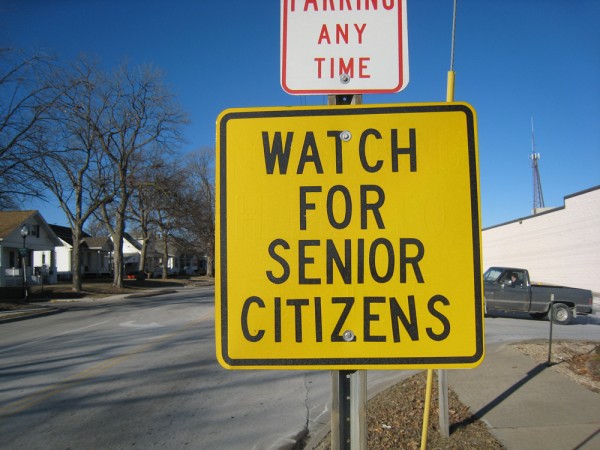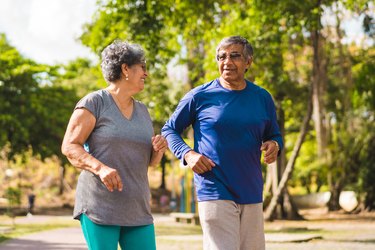6 Chapter Six: Aging in Sport
Section One: The Fundamentals
A) Keywords
Exercise 1:
Provide a brief definition of one of the padlet keywords for this week.
| Defining Ageing Habitus
Ageing habitus refers to the internalized dispositions and attitudes that people develop as they grow older, shaped by long-standing social and cultural norms about aging. As discussed by Pike (2015), this concept explains how older adults often come to see themselves and their abilities in ways that reflect societal expectations of frailty and decline, which can influence their participation in activities like sports.
|
B) The Social Significance of Aging in Sport
Exercise 2: Notebook Prompt
How is old age popularly represented today? Find an image online that you think exemplifies one defining attitude towards old age and paste in your notebook below with a brief explanation of what this image means to you.
| According to Pike (2015), old age in popular representations is often depicted as a time of inevitable decline, where physical ability and vitality give way to frailty and dependency. Mainstream culture tends to focus on the limitations of the ageing body portraying older adults as less capable and more vulnerable which reinforces ageist stereotypes. While there are emerging narratives that celebrate active, engaged ageing, these counter-discourses remain on the margins. Instead, the dominant view continues to emphasize the loss of physical prowess and the risks associated with ageing, overshadowing the diverse experiences and capabilities of older people.
|
Exercise 3: Notebook Prompt
What does the article (referencing another study by Dionigi) mean by its statement that sport can help aging people to simultaneously “accept and resist the ageing process” (572)? Respond by audio or text and find paste two images sourced online into your notebook showing how sport might help aging people to both accept and resist the aging process.
| When we say that sport can help older adults “accept and resist the ageing process” (Pike, 2015), it means that engaging in sports offers them a dual benefit. On one hand, it allows them to acknowledge the natural changes that come with age recognizing that some physical abilities may slow down. On the other hand, by participating in sports, they challenge the stereotype that aging automatically means weakness or inactivity. For example, Dionigi and colleagues (2013) show that older athletes often adapt their sport practices to suit their changing bodies. They accept that aging brings limitations while simultaneously pushing against the idea that they must retire from active, competitive lifestyles. This dual approach not only helps them maintain a positive self-image but also defies societal expectations that older people should slow down or withdraw from physical activity.
|
Exercise 4: Notebook Prompt
Who are the groups less likely to have extensive opportunities to take part in sports, according to Pike? How does privilege factor into aging and sport? (200 words max)
| According to Pike (2015), groups less likely to have extensive opportunities to participate in sports include older adults, individuals with disabilities, and those from lower socioeconomic backgrounds. These groups face structural barriers such as limited access to facilities, financial constraints, and societal perceptions that discourage their participation.
Privilege plays a significant role in aging and sport, as those with financial resources, social capital, and strong support networks are more likely to continue engaging in physical activities. Affluent older adults often have access to private clubs, specialized training, and adaptive programs, while those with fewer resources face exclusion. Additionally, dominant cultural narratives associate athleticism with youth, reinforcing the idea that aging bodies are less capable. This discourages participation and limits funding for age-inclusive programs. Overall, privilege influences who can remain active in later life. Those with economic and social advantages can challenge ageist stereotypes and access opportunities, while marginalized groups experience greater barriers, reinforcing inequality in sports participation.
|
Exercise 5: Padlet Discussion
Why do you think age discrimination is “reported more than any form of prejudice” with older people presented as a threat to social values and interests? Feel welcome to use video in your responses. Paste your comments (or transcript of your video) below!
| Age discrimination is widespread because society values youth, productivity, and independence, while aging is often linked to decline and dependence. Older adults are seen as a burden on resources, making them a perceived threat to younger generations’ interests. Media reinforces negative stereotypes, normalizing discrimination more than other forms of prejudice.
|
B) Older Women and Sport
Exercise 6: Notebook Prompt
What differences do you see in these ads? Which one is more inclusive? How is age represented or not represented in each? Answer these questions in your notebook.
| The Nike – You Can’t Stop Us (2020) ad emphasizes unity, resilience, and overcoming barriers in sports. It features a diverse range of athletes across different sports, genders, and abilities, portraying sports as a tool for social change. However, while it promotes inclusivity, it primarily focuses on professional and elite athletes, and older adults are notably absent, reinforcing the dominant narrative that sports are for the young and highly competitive.
In contrast, This Girl Can – Me Again focuses on everyday women engaging in physical activity. It highlights body confidence, movement, and the joy of participation rather than competition. This ad is more inclusive in representing a broader range of ages and body types, making it more relatable to women who may not see themselves in traditional sports media. Overall, This Girl Can is more inclusive, especially regarding age. While Nike promotes empowerment, it does not challenge age-related stereotypes as effectively as This Girl Can, which embraces recreational movement for all women, regardless of age or fitness level.
|
Exercise 7: Notebook Prompt
In her article, “Assessing the sociology of sport: On age and ability,” Elizabeth Pike references a “trend towards a ‘feminisation of ageing’, with many women living longer than men” (573). Do you agree that aging has been “feminized” in this way? How? Answer these questions in your notebook.
| I do agree with Pike (2015) idea that aging has been “feminized.” Because women tend to live longer than men, our everyday view of old age is mostly based on women’s experiences. This means that when we think about what it means to get older, we often focus on issues that affect women such as loneliness, financial difficulties, and the role of caregiving. Society has come to expect older women to be nurturing and less active, and this influences everything from how healthcare and community services are designed to how aging is portrayed in the media. Essentially, because most older people are women, the common narrative about aging reflects their challenges and lifestyles, sometimes overlooking the different experiences that older men might have.
|
Section Three: Module Mini Assignment
| Pickleball has quickly become a symbol of how society views aging and physical activity. On one hand, it’s celebrated as a fun, low-impact sport that keeps older adults active and socially engaged. Pike argues that aging is increasingly seen through the lens of productivity and the need to “stay young” (Pike, 2015). This idea is evident in media portrayals that praise older pickleball players as role models for active aging.
For example, Elaine Anselmi’s article, “Is a park still a park if it’s paved?” describes how Peterborough’s plan to convert a green park into pickleball courts and parking is sparking strong community reactions (Anselmi, 2024). Critics argue that replacing natural spaces with hard surfaces not only harms the environment but also reduces the park’s broader community benefits. This controversy hints at a neoliberal agenda: by pushing activities like pickleball, policymakers seem to prioritize measurable productivity and active lifestyles over preserving open, natural spaces. Another media piece from NPR, “Pickleball is Taking Over America: A Sport for Seniors,” presents the sport as an ideal solution for keeping seniors physically fit. While this story is upbeat, it reinforces the expectation that older adults must constantly demonstrate their vitality. Social media, too, reflects this tension. A tweet from @PickleballLover, using hashtags like #ActiveAging and #PickleballPower, celebrates the sport’s energy. However, it also underscores a narrow view of aging where only active, visible participation is seen as acceptable. These depictions are double-edged. They honor older adults for staying active, yet they also pressure everyone to adhere to a single standard of “successful” aging. In the end, while pickleball provides a welcoming space for many seniors, the underlying messages and the policy decisions they inspire often marginalize those who do not, or cannot, fit the active aging mold. An image capturing a lively pickleball match among older adults would visually represent both the sport’s appeal and the complex expectations placed on aging bodies.
|




